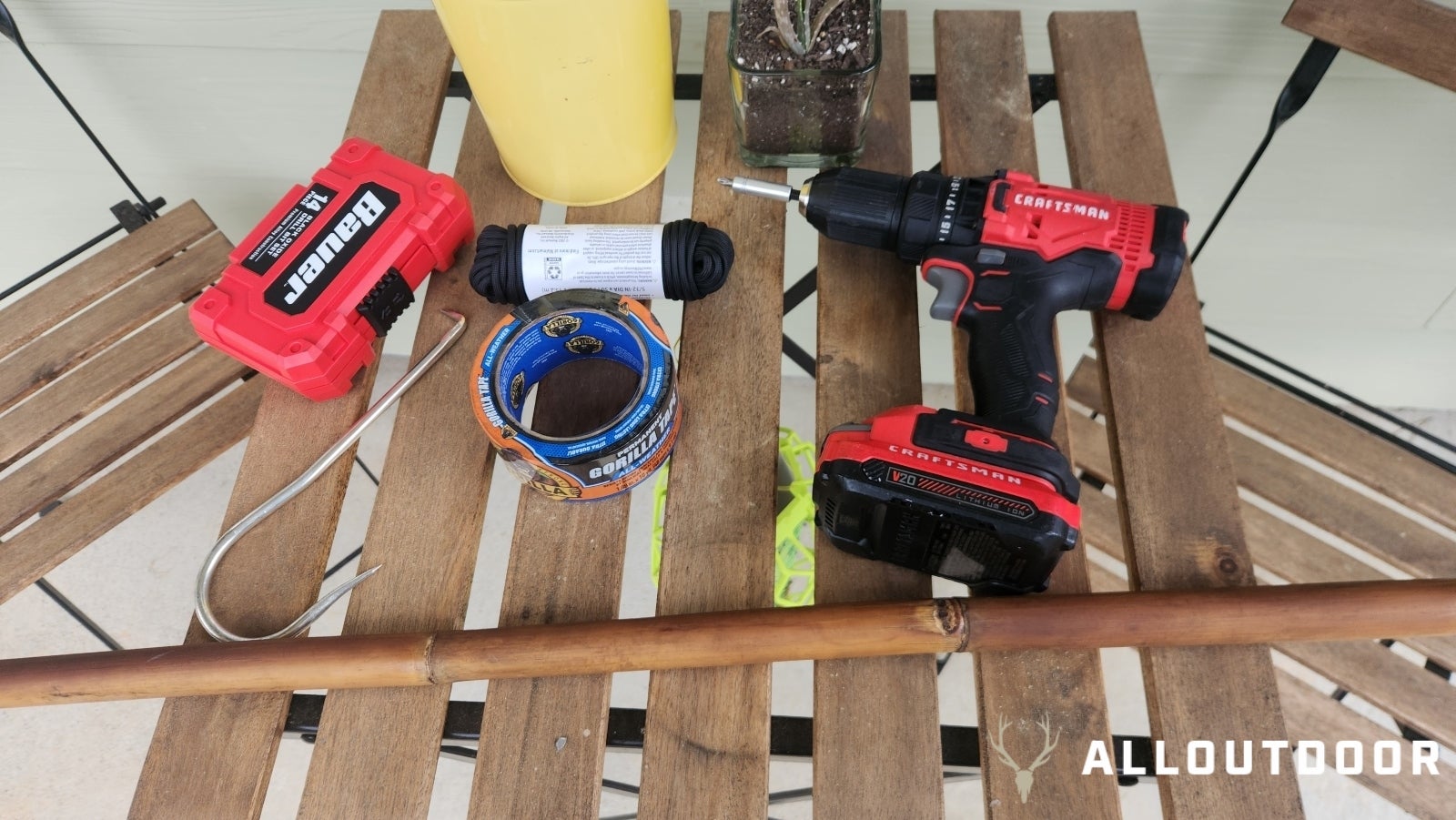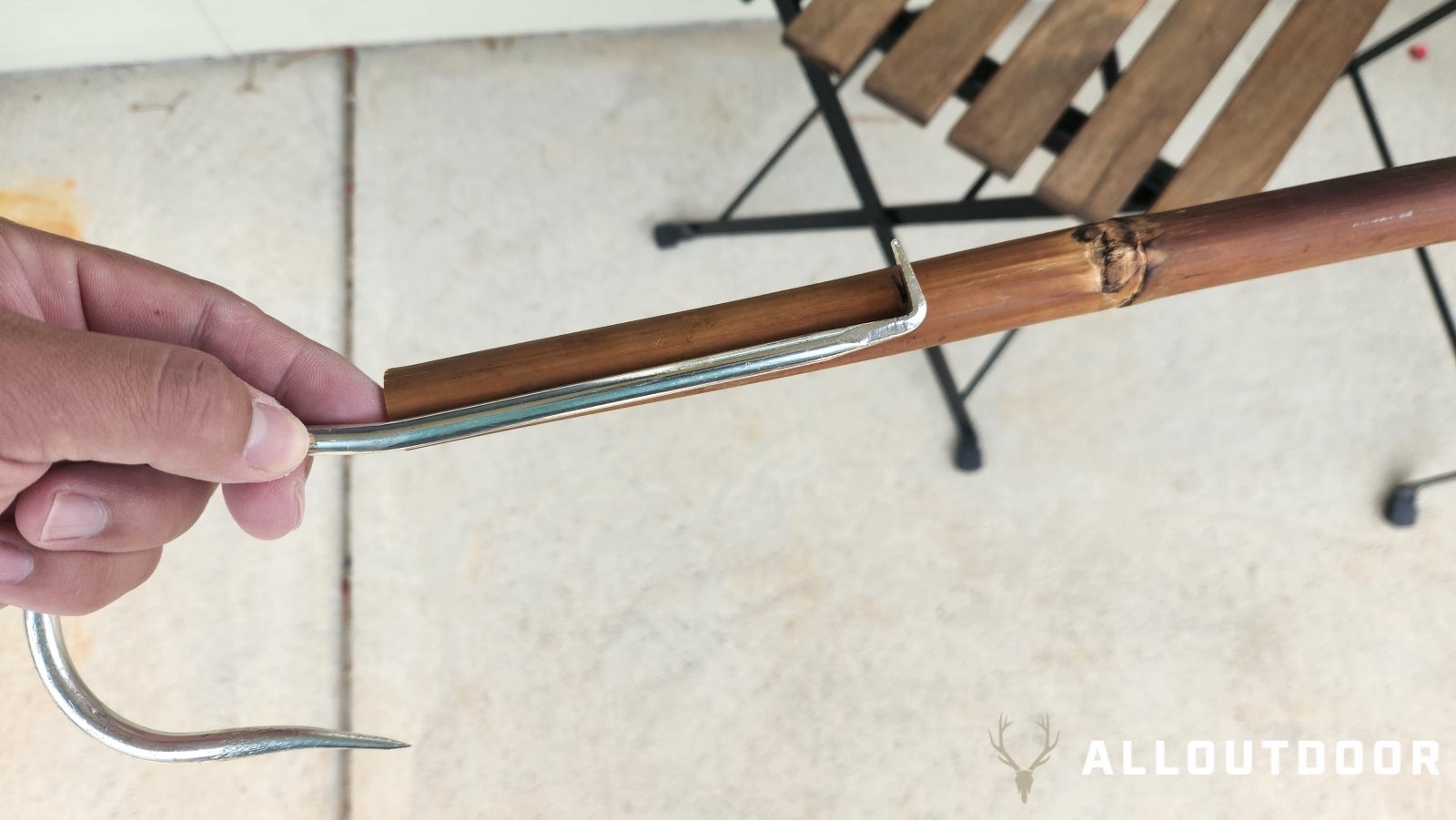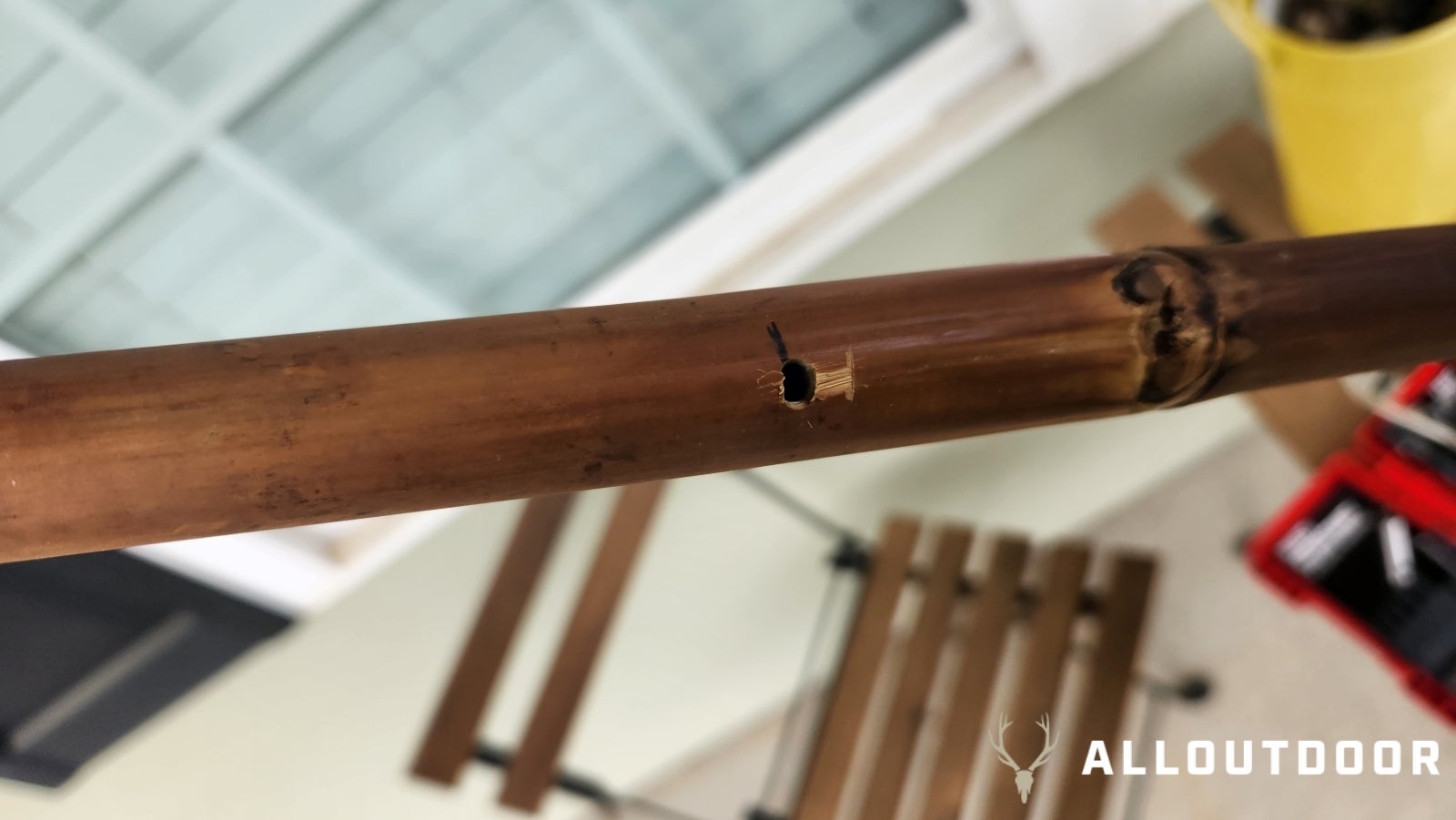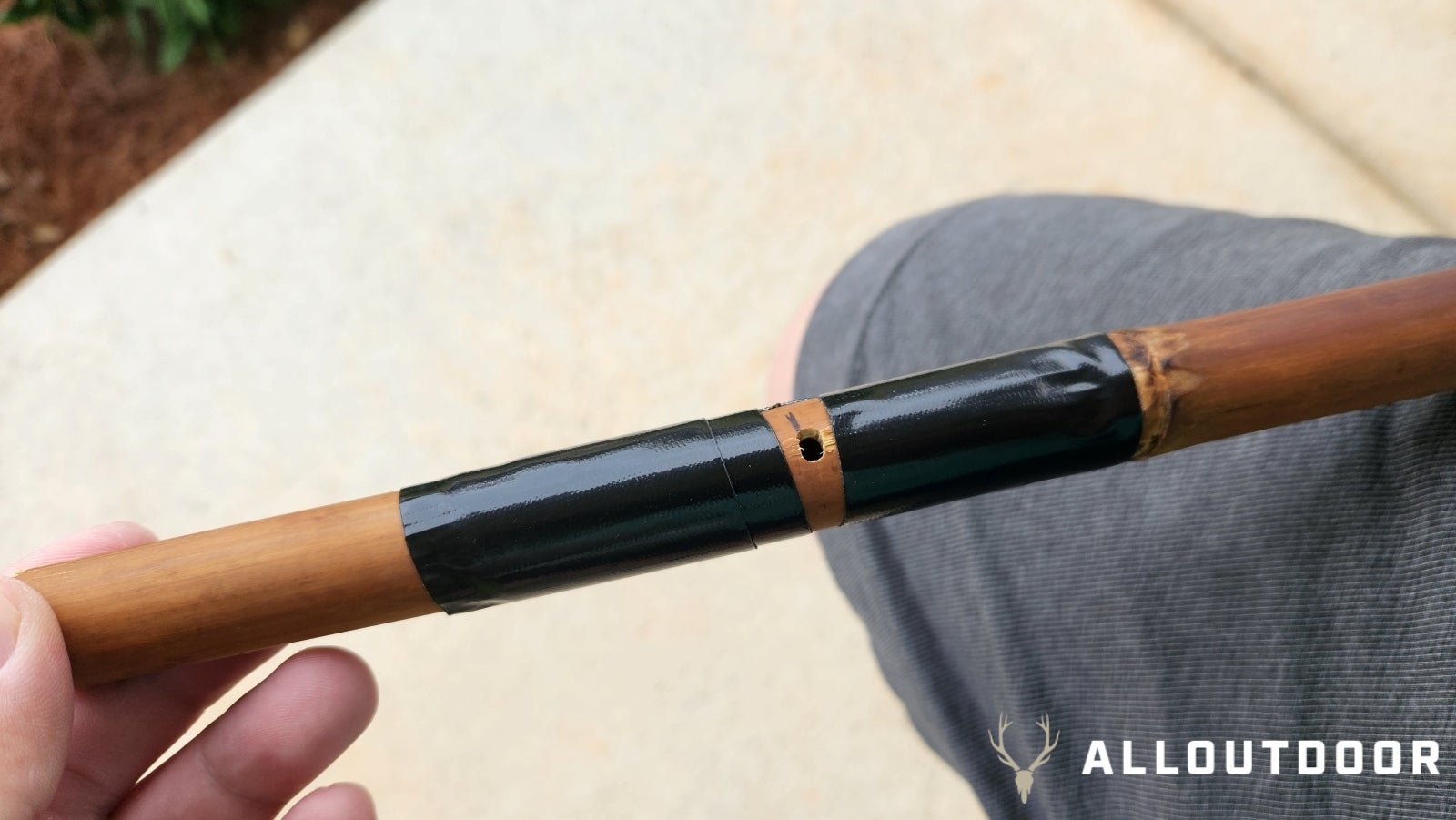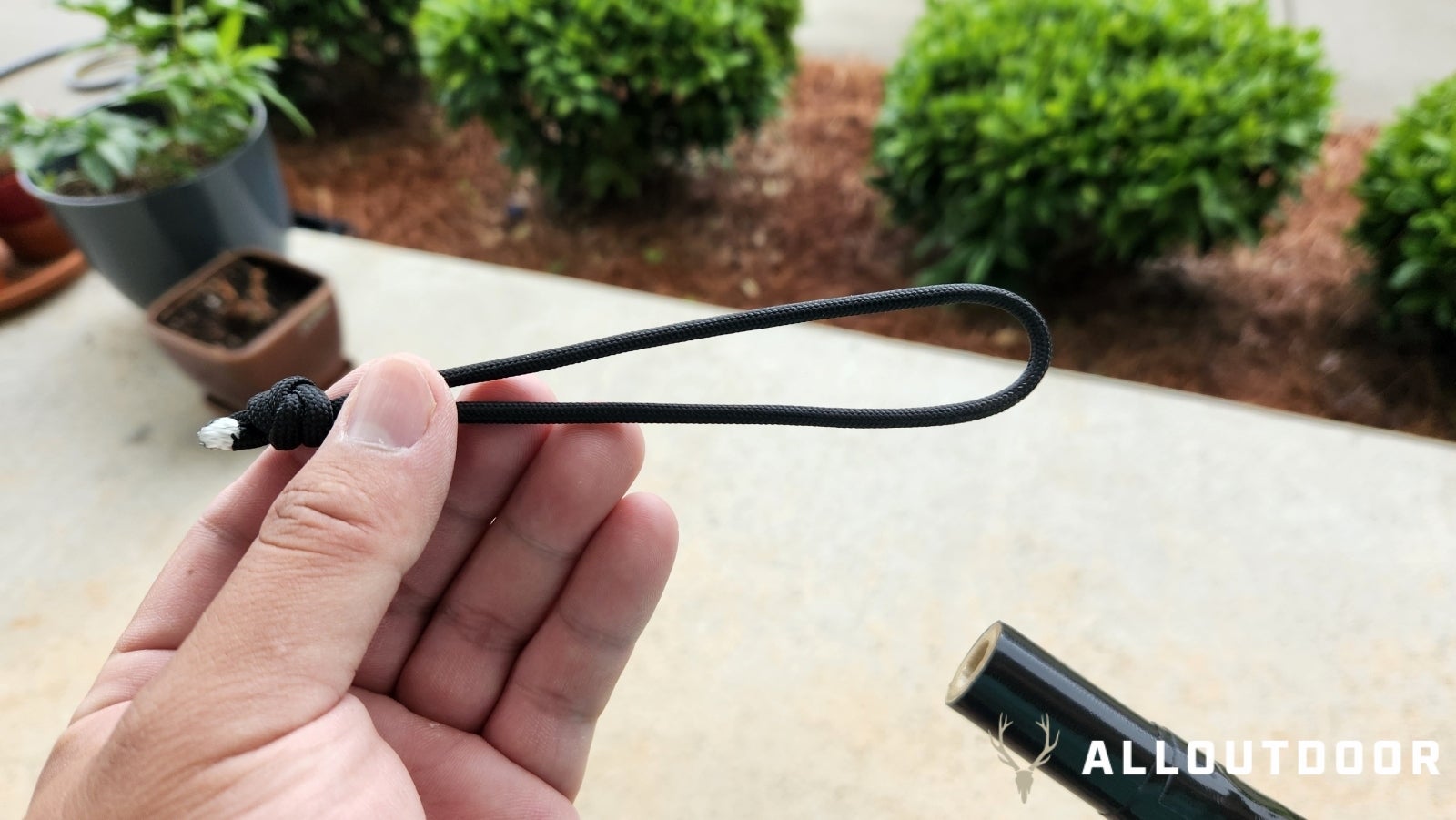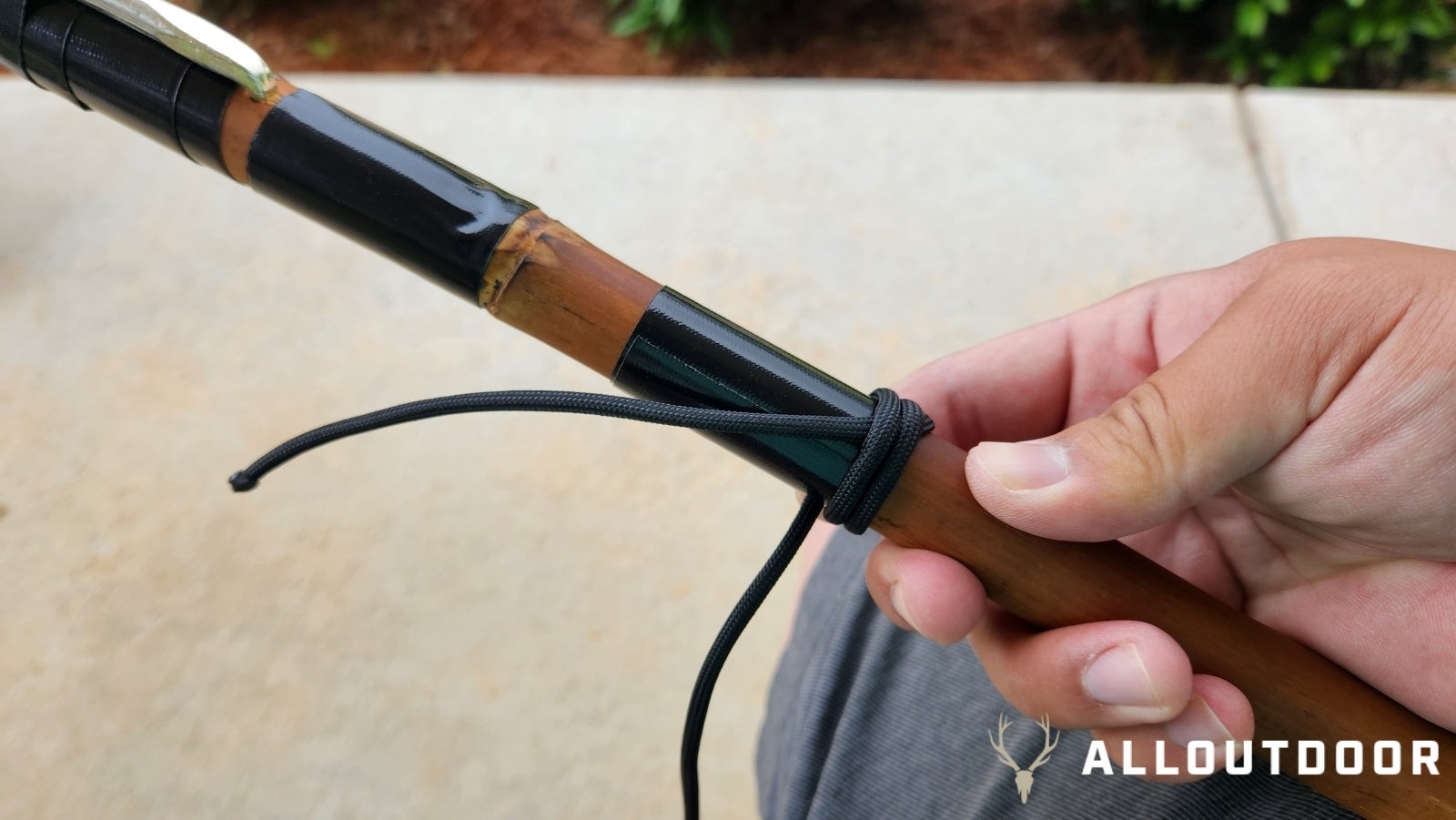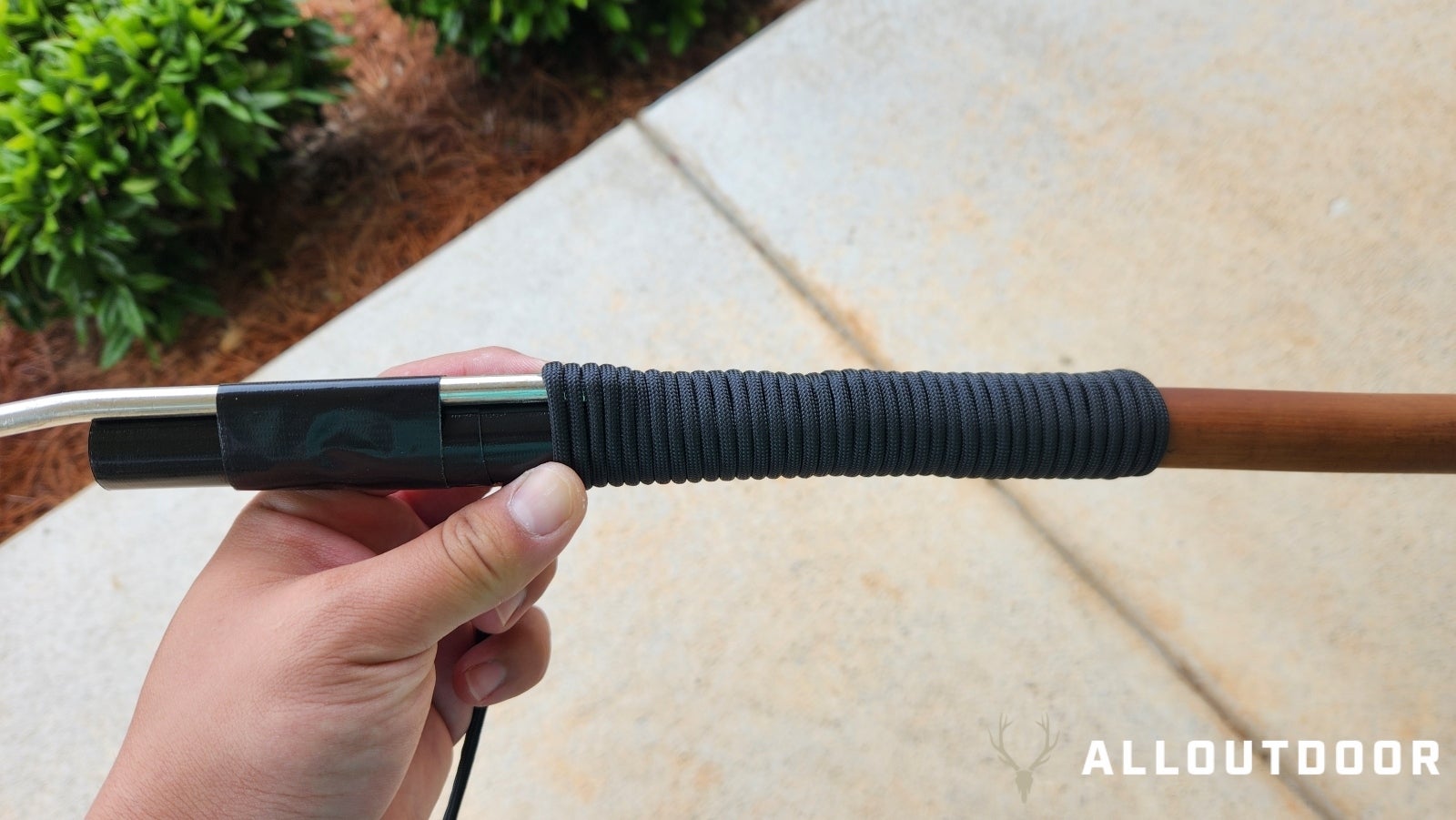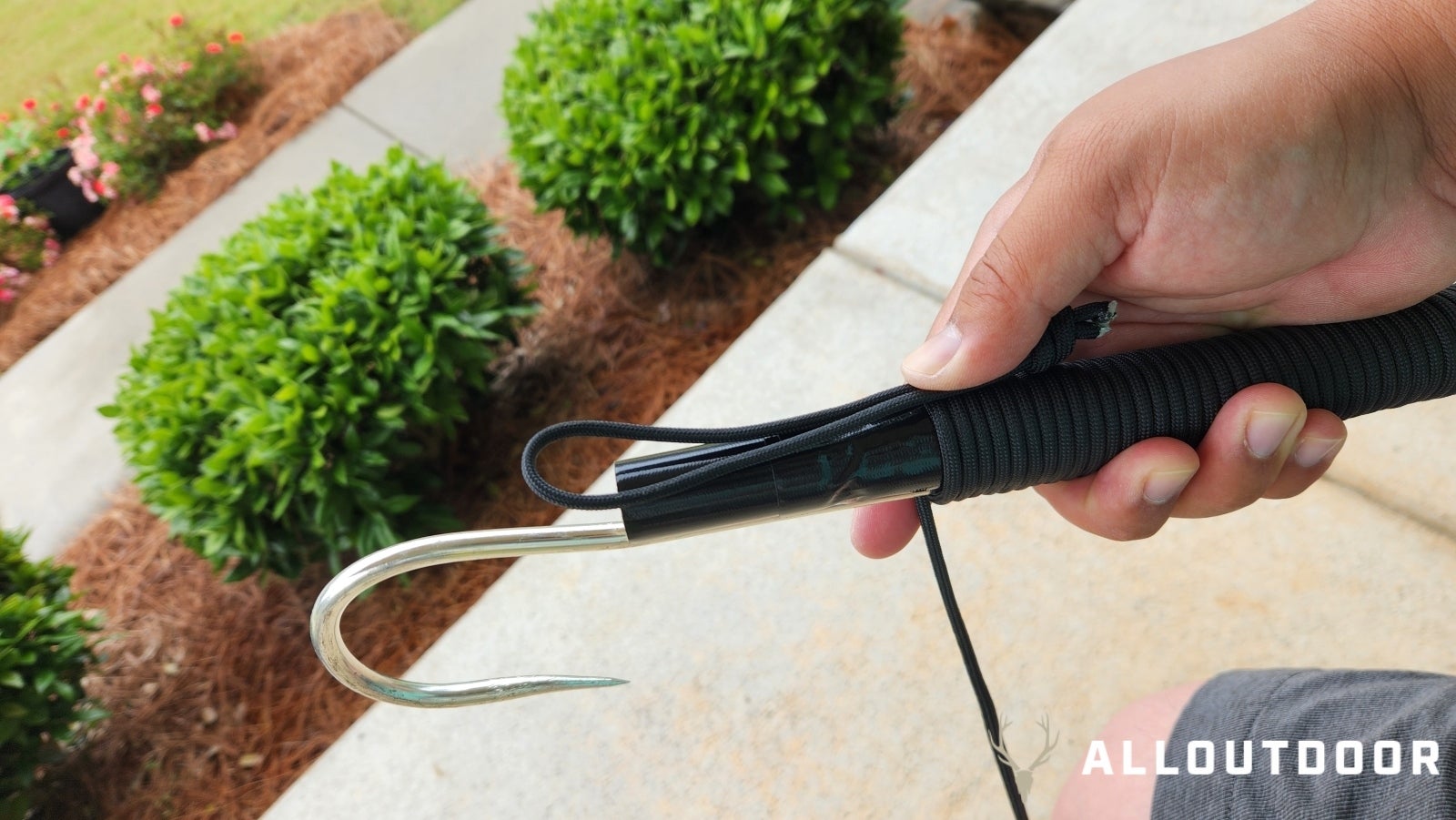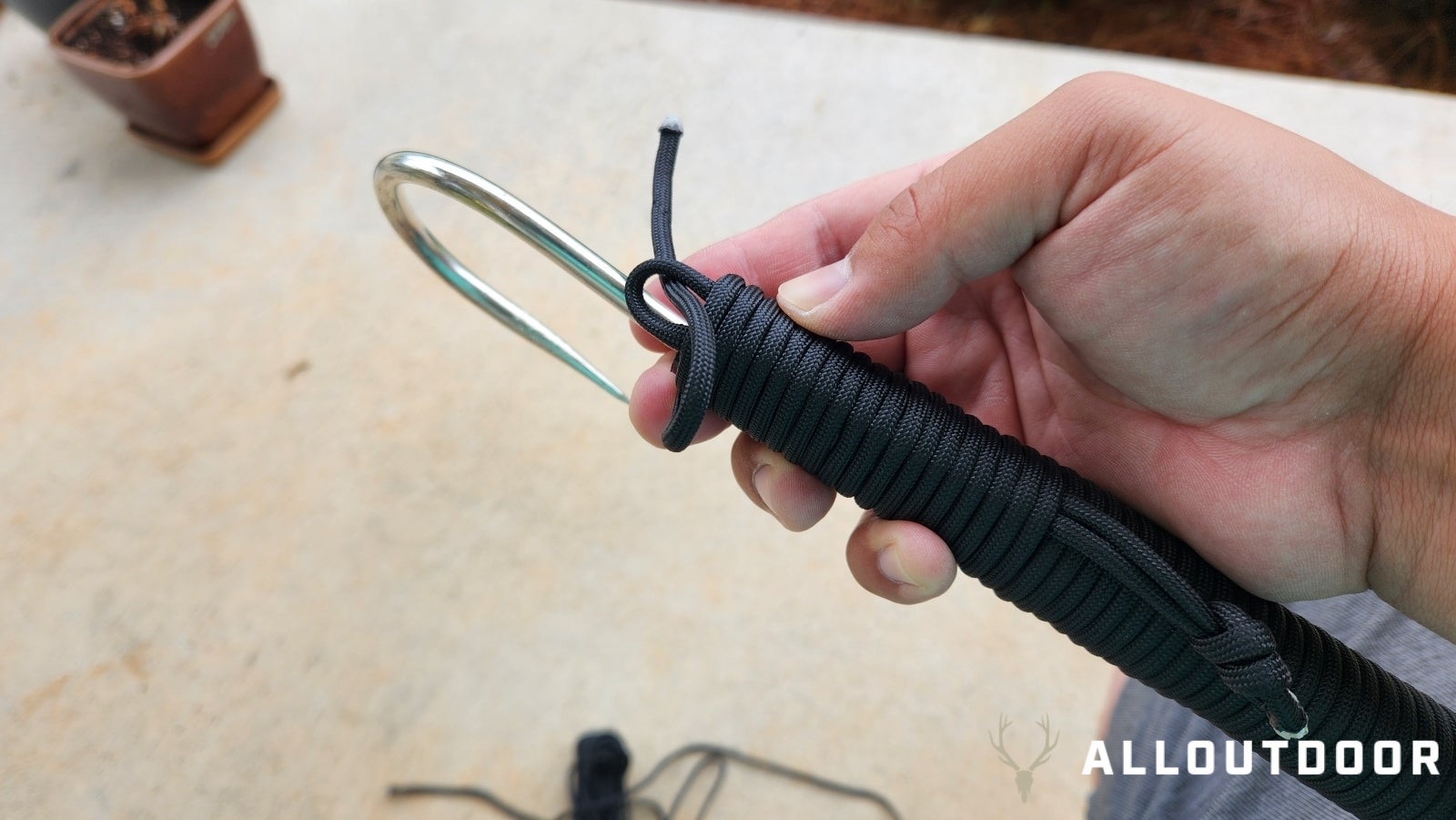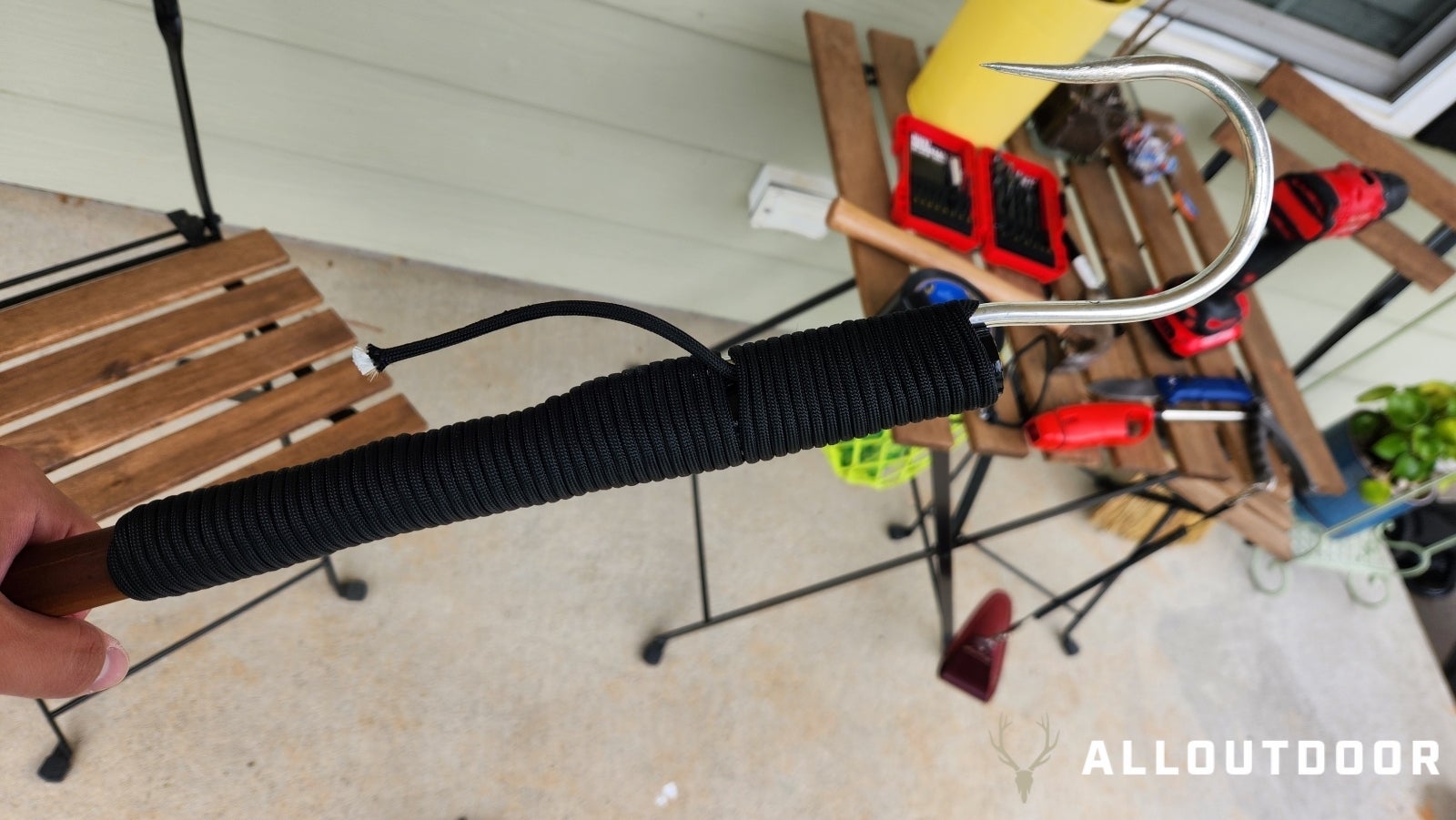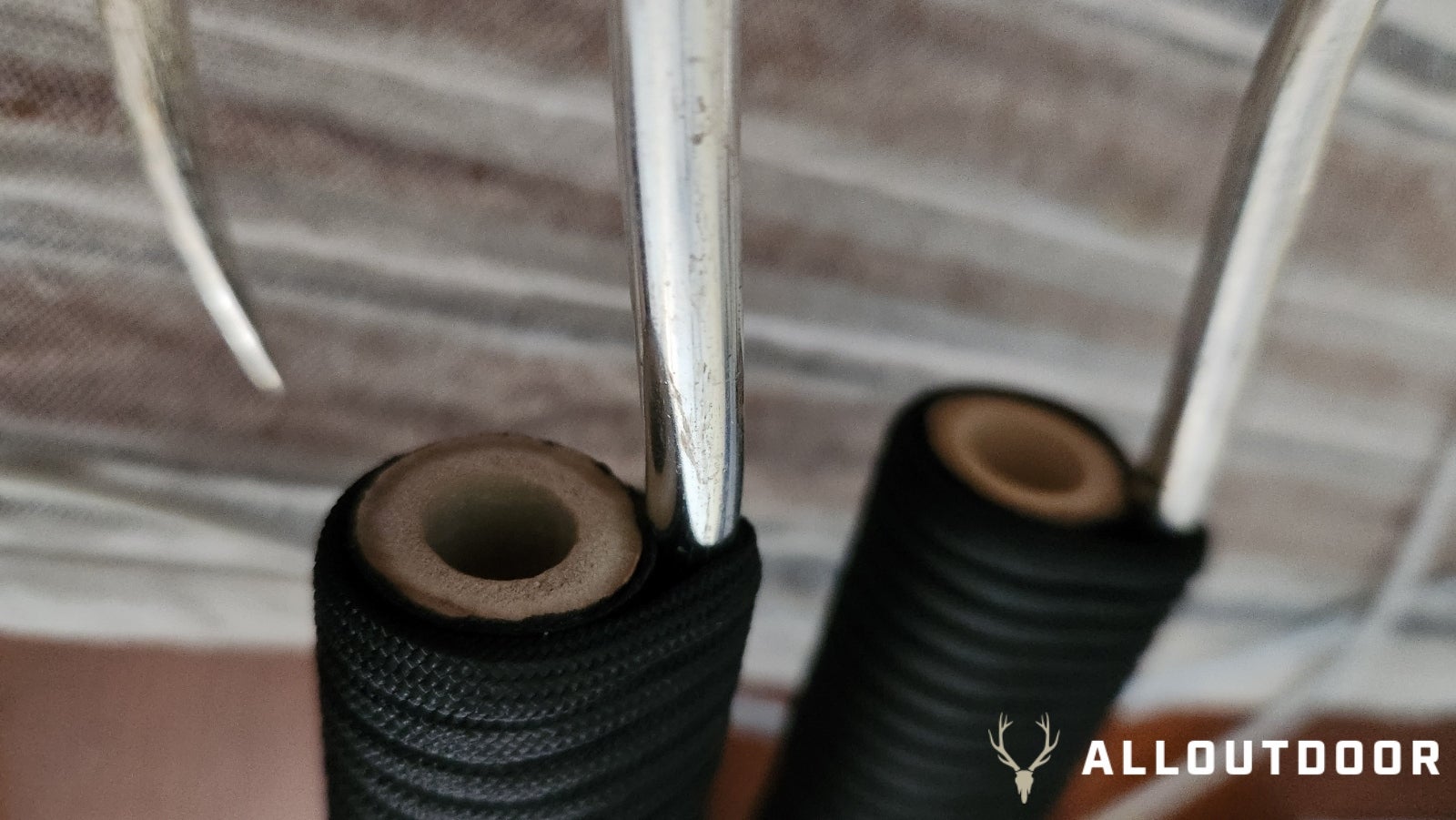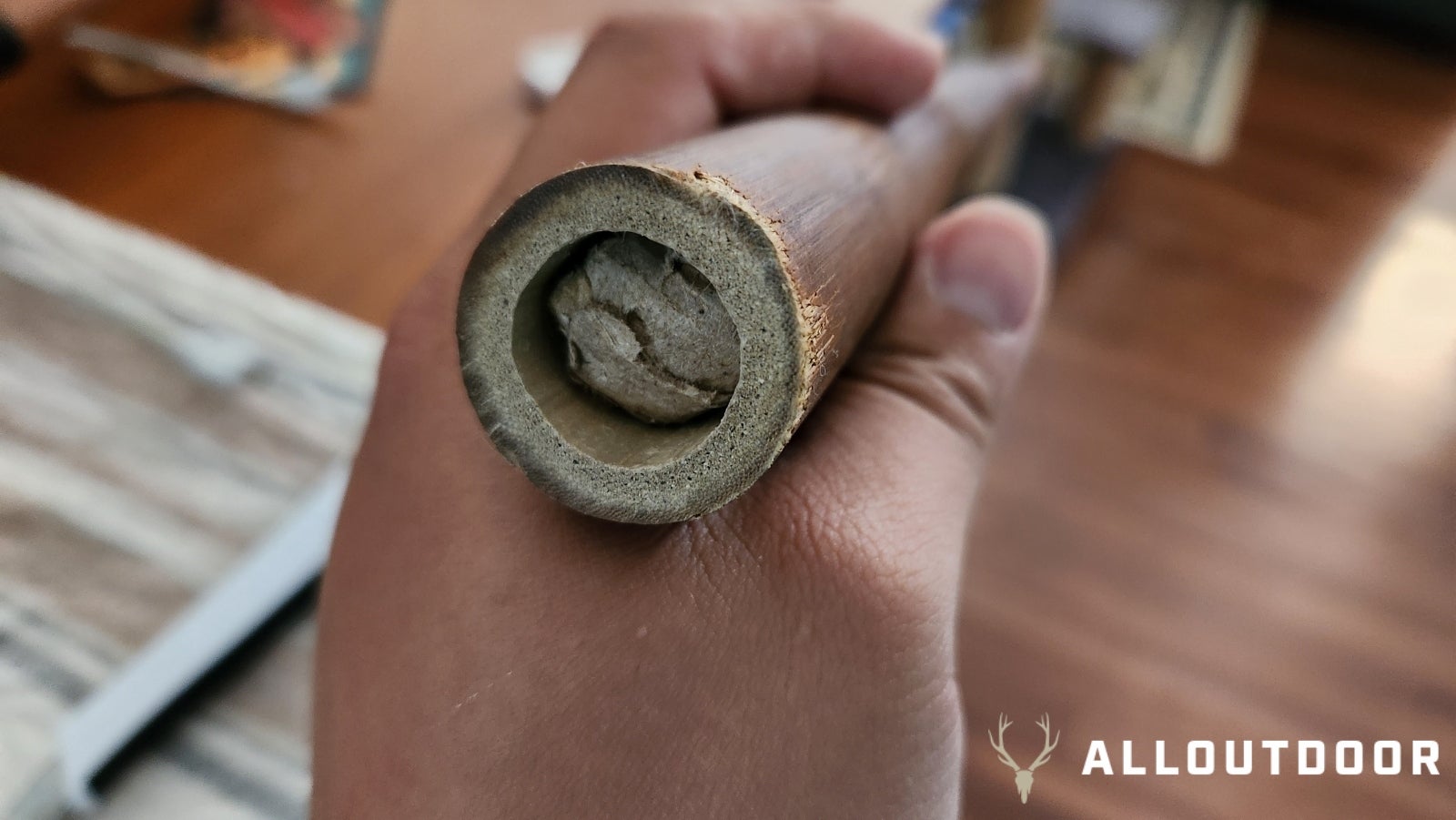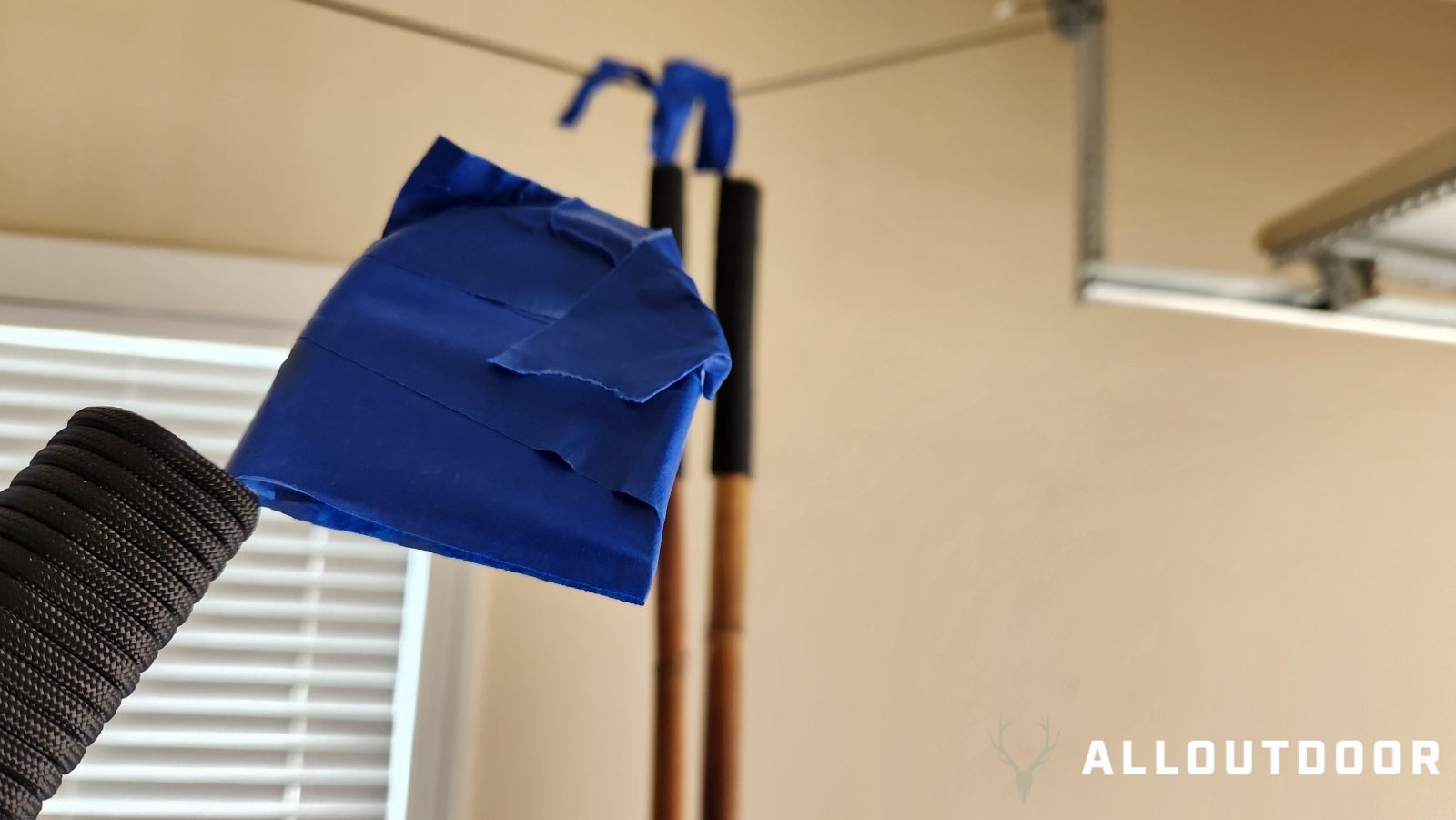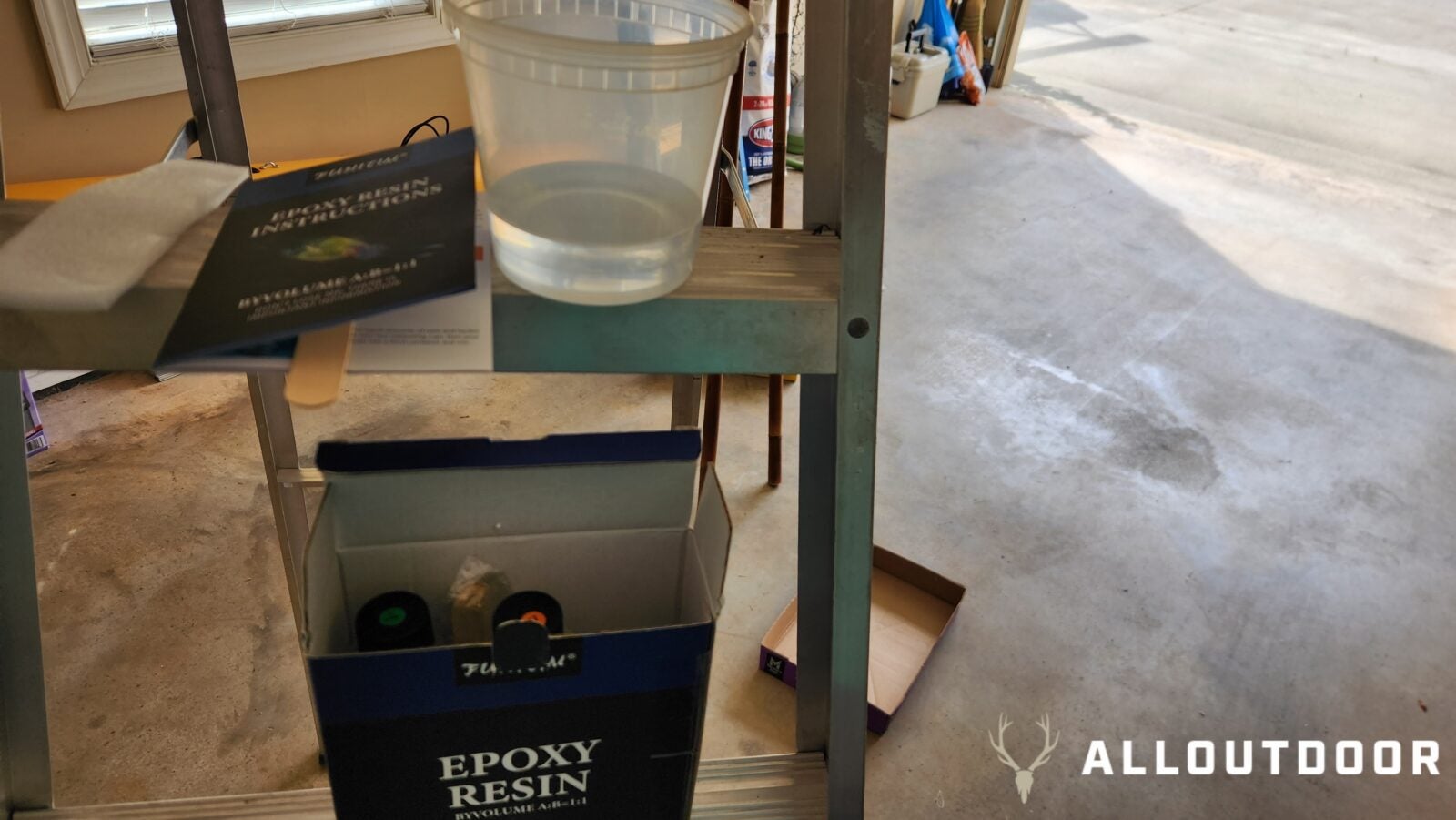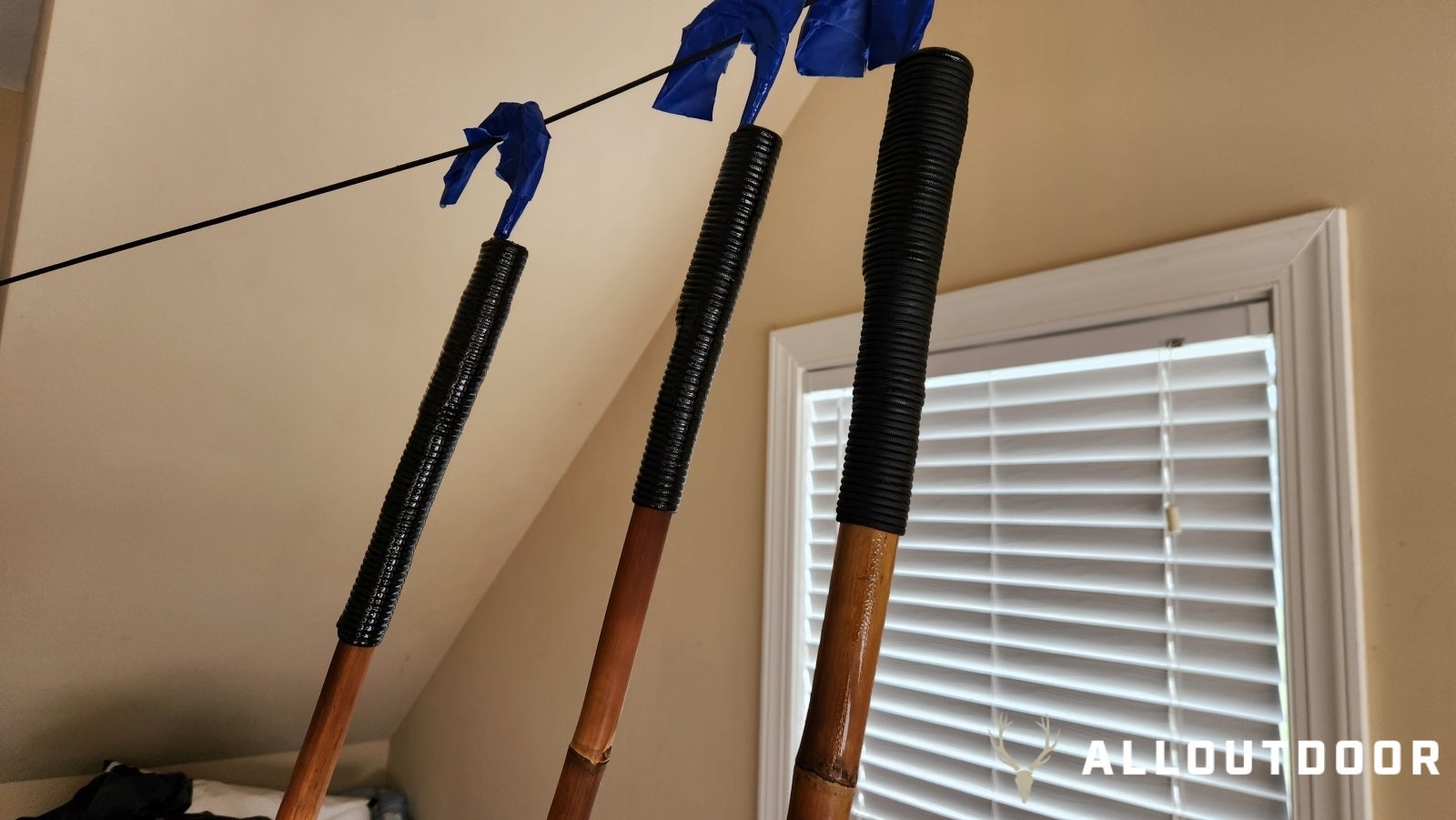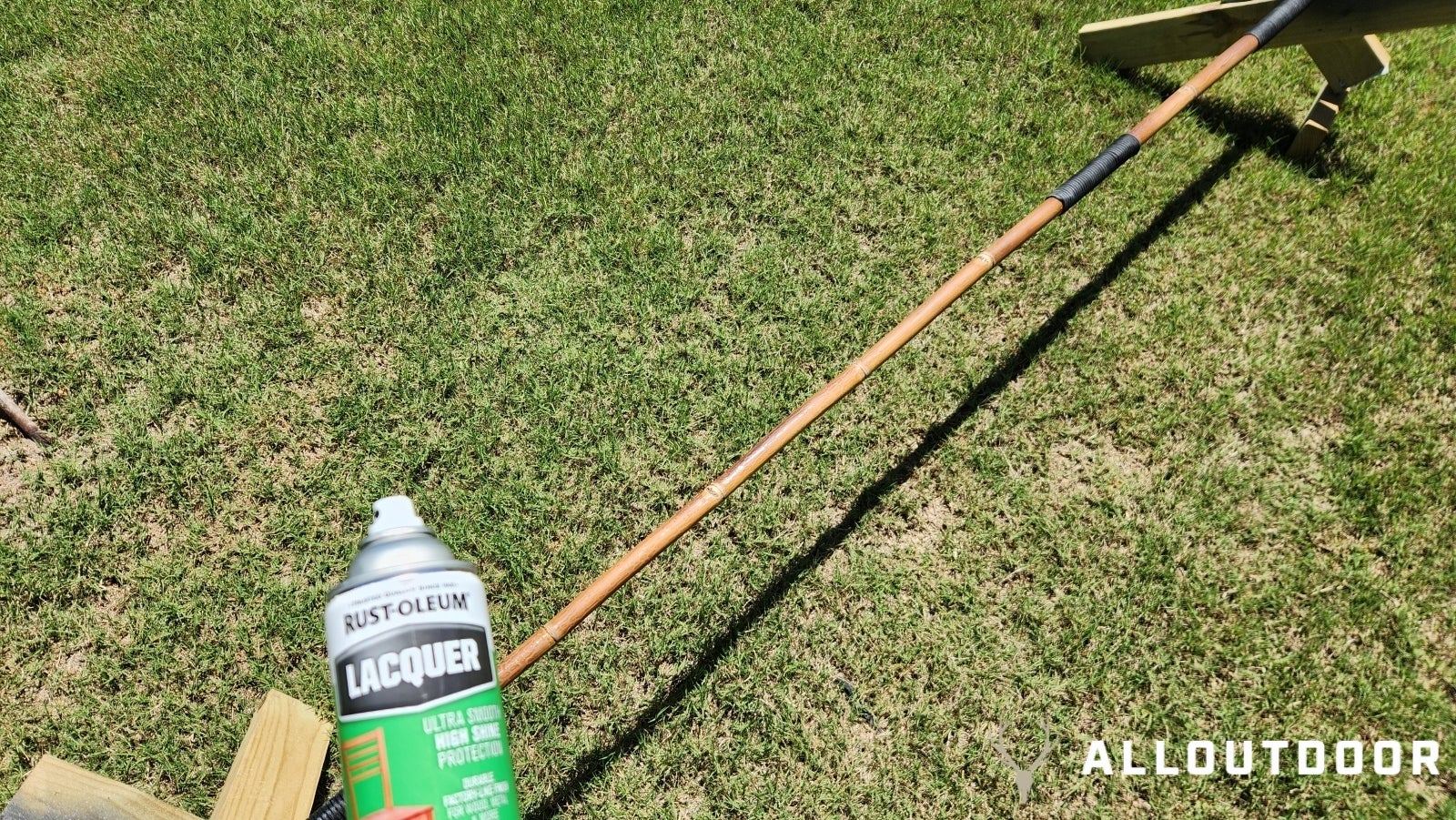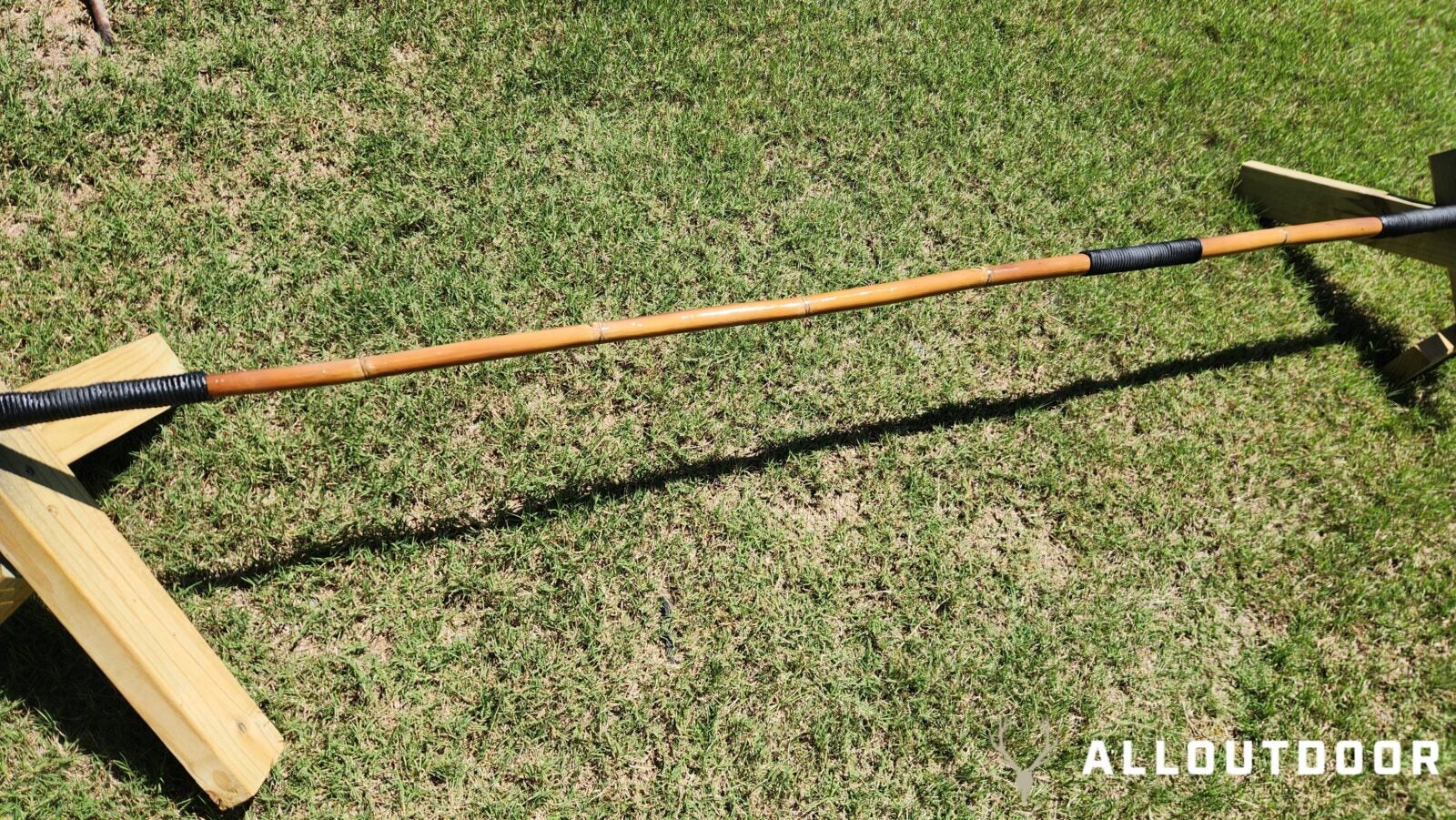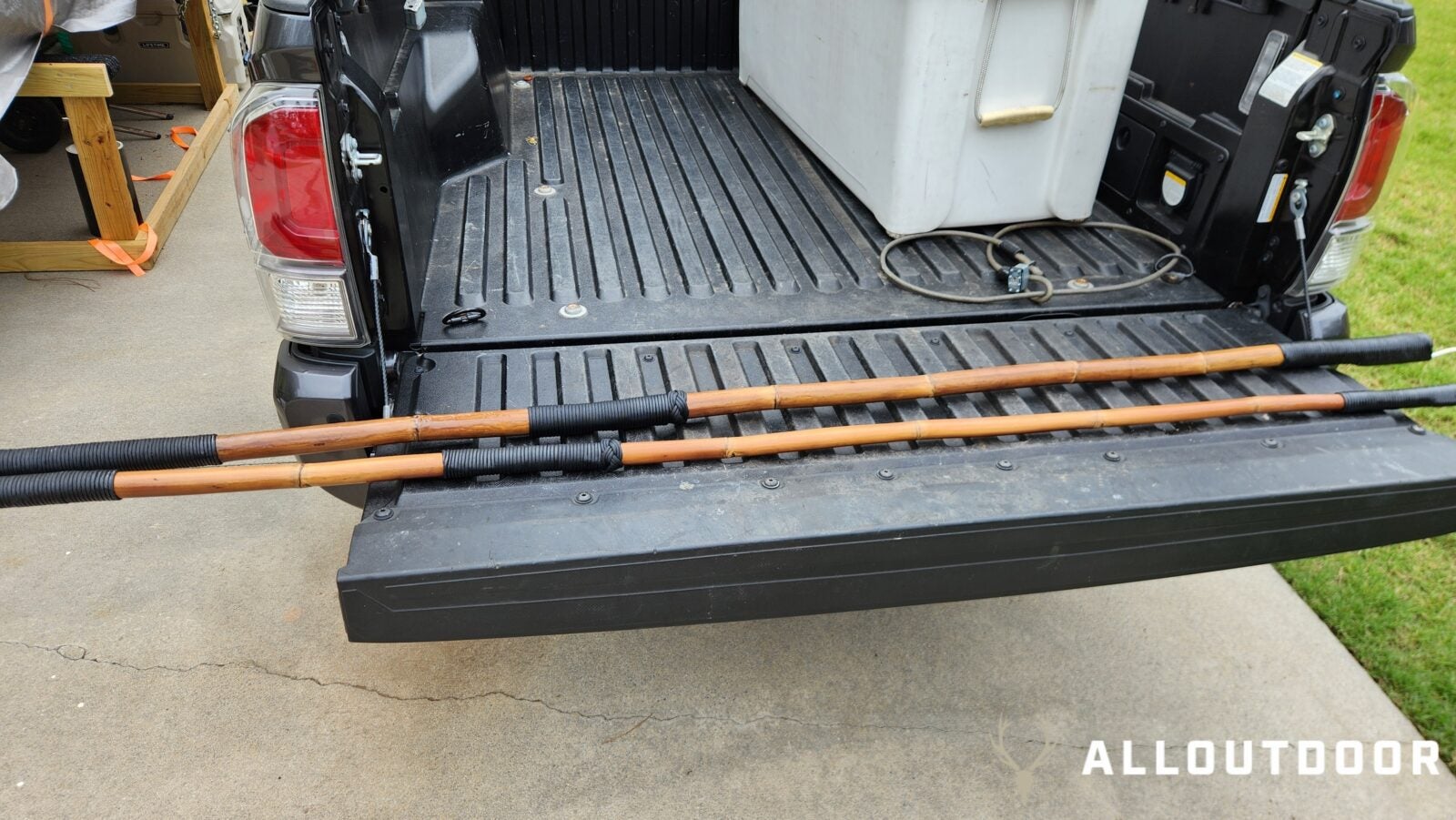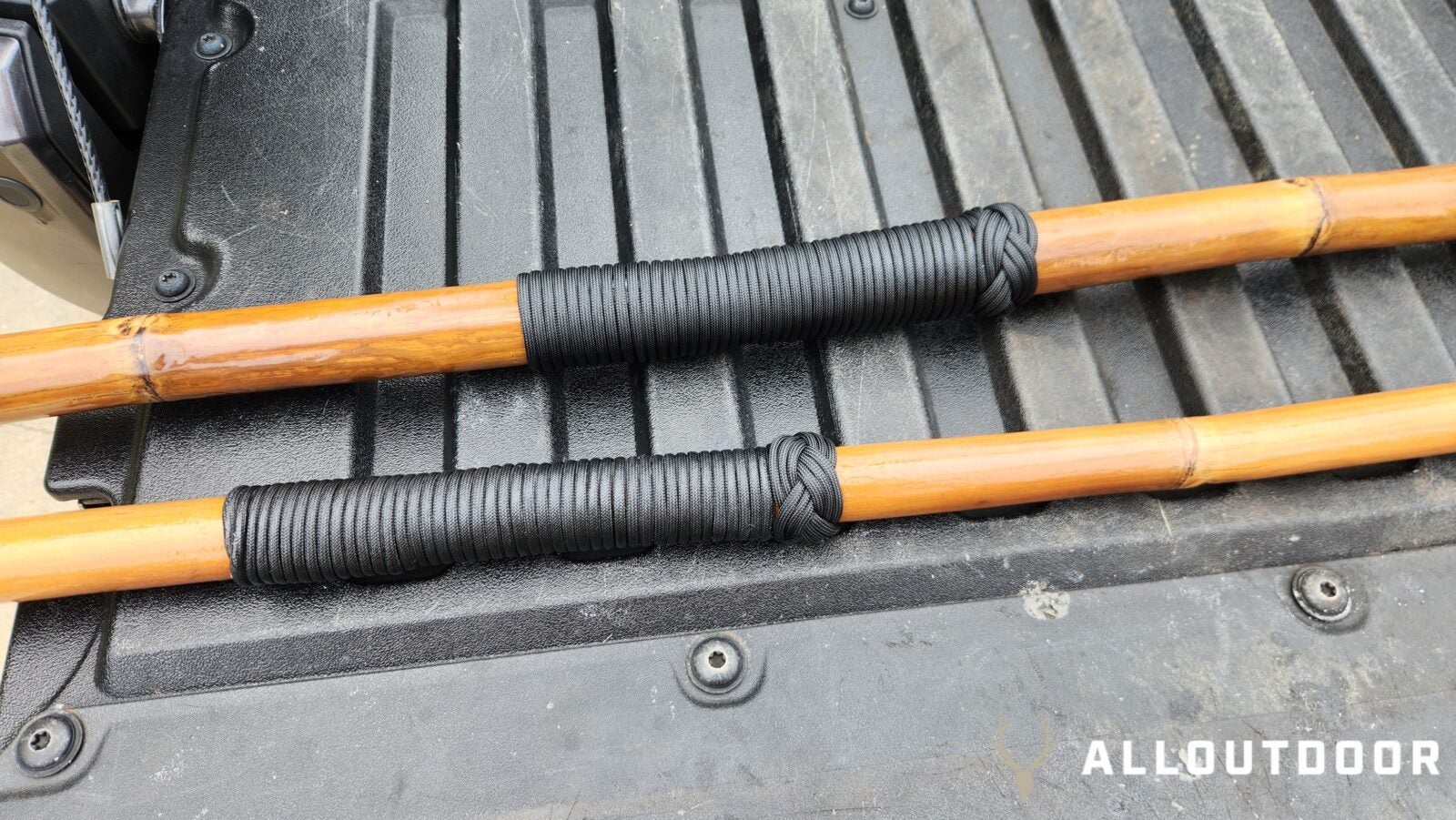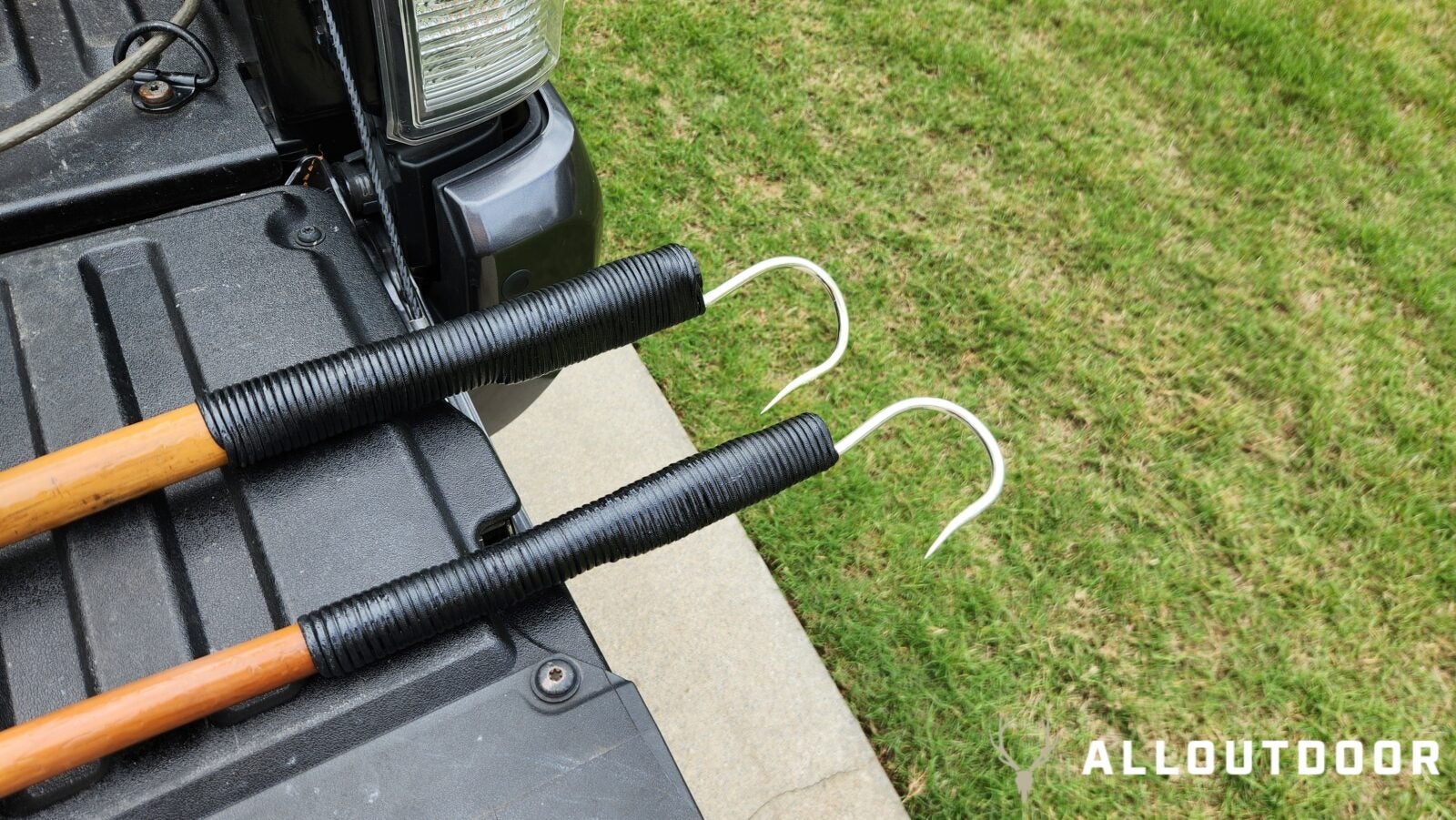Do-It-Yourself Project (DIY) – Calcutta Bamboo Gaff
Eugene L. 04.08.25

A gaff is a must-have piece of landing gear if you are fishing in the salt and want to bring meat home. Essentially a giant hook on a stick, a gaff lets you reach out and hook into a big fish and bring it over the rail without worrying about popping your line or leader at the boat. While you can easily buy a gaff at any tackle shop, they often cost well into the hundreds of dollars, especially customized ones. So, I’ll be showing you how to make a Calcutta Bamboo Gaff today. This is a surprisingly easy and fun project to do that should cost you under $40 a piece for a 7 ft custom Calcutta Bamboo Gaff.
Do-It-Yourself Project (DIY) Coverage on AllOutdoor
- Do-It-Yourself Project (DIY) – Outdoor Kayak Rack V2 Hobie Rack
- Do-It-Yourself Project (DIY) – Outdoor Kayak Rack
- Do-It-Yourself Project (DIY) – Camo Painting a Rifle Stock
- Do-It-Yourself Project (DIY) – Collapsible Pier Cart Rod Holders
- DIY: Ghost Shrimp-Yabbie Pump
For materials and tools to make the Calcutta Bamboo Gaff, all you need is a length of Calcutta cane, a gaff hook, paracord, duck tape, epoxy, spray laquer, an electric drill, drill bits, and vice grips. Almost everything here can be bought locally anywhere in the country except for the bamboo and gaff hooks. Both of those are easily ordered online. I ordered my cane through Frank’s Cane and Supply out of Huntington Beach, California, and the Mustad Gaff Hooks from Charkbait Sportfishing Supplies.
Once you have all your supplies, take your gaff hook and piece of Calcutta cane and mark out where you are going to drill a hole for the barb of the gaff hook. Then carefully drill out a hole that is just big enough for the barb; make sure you don’t drill through both sides. You can work the drill bit side to side to chamfer out the hole to fit the bard easier. You don’t want the hole too tight as it puts lateral pressure on the bamboo and could lead to splitting over time.
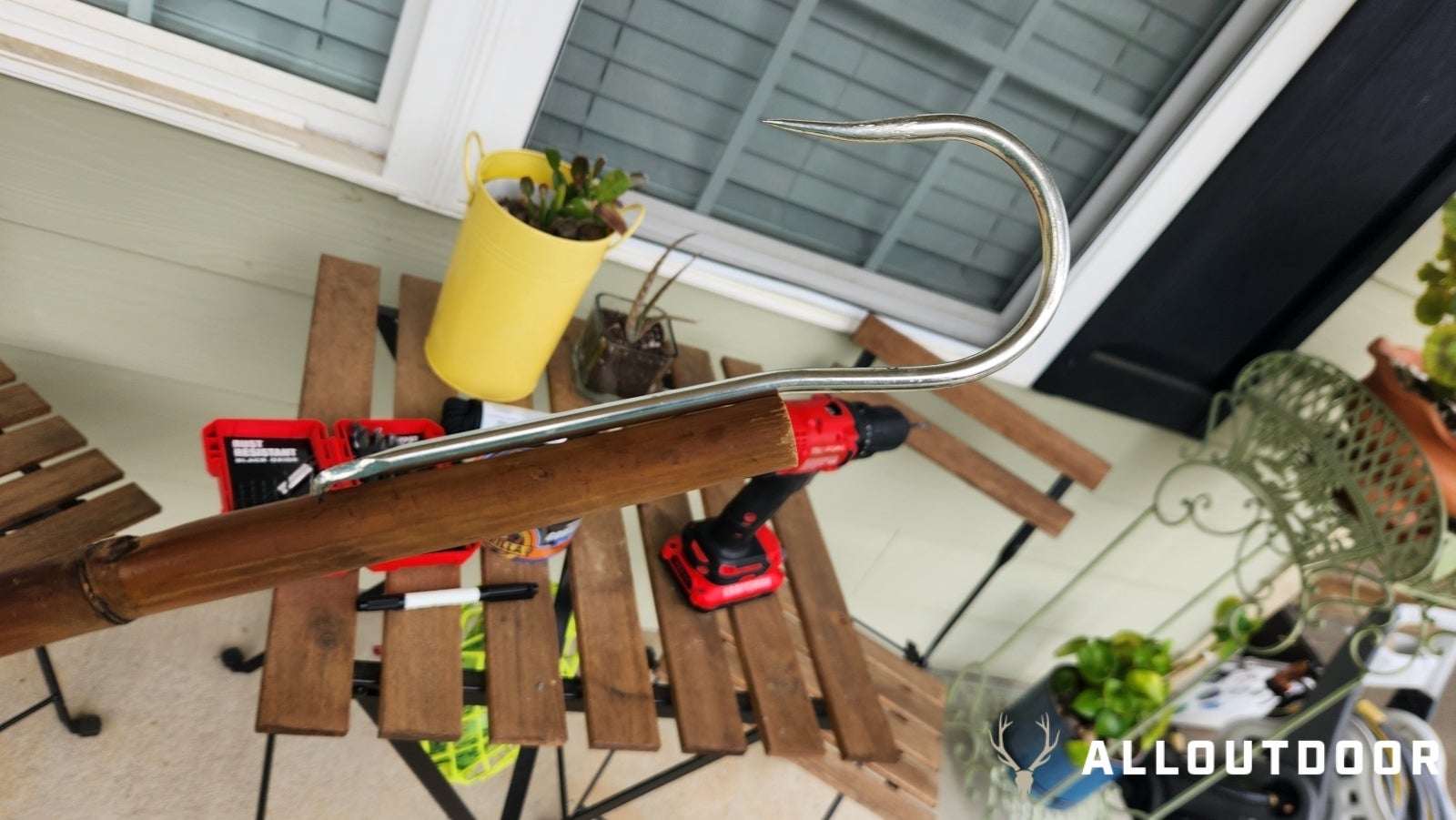
Once you have the barb hole drilled, take your duck tape and wrap the cane on both sides of the hole. We are doing this for added grip for the paracord wrap. Then, place the gaff hook in place on the bamboo and wrap the hook onto the bamboo with the duck tape as well. Once the hook is secured, put it aside and grab a 1ft length of paracord and make a loop. We are going to use that as a finishing tool later for the paracord wrap.
Now, grab your paracord and start wrapping the bamboo from the bottom, as shown in the photo below. You are wrapping the tag end as tightly as you can as you work your way up the bamboo shaft. Keep just doing these tight wraps of paracord until you reach a few inches from the top of the gaff.
There, you will take that loop of paracord you made earlier and place it on the shaft of the gaff and start wrapping over it as well. Make sure to leave enough of the loop sticking out so you can run the paracord back through it later. Once you reach the top of the bamboo gaff, take the tag end and run it through the loop as shown below.
Take your vice grips and grab onto the knot of the loop, and start pulling the loop out of the wraps. This will run the tag end of the line back under the wraps, securing the paracord into place. Then, carefully, with a sharp knife, cut the excess paracord tag flush to the wrap. Using something hard and smooth, you can then rub the paracord to smooth out the where you cut the tag end for a prettier finish.
For the grips of the bamboo gaff, you can use the same duck tape and paracord wrap technique to make them. Placement and style are up to you; go with what you find most comfortable. I chose to do split grips for my bamboo gaffs, but a full-length grip is popular as well. Whichever style you choose, once you are done with the wrap, it’s time to finish the gaff using epoxy. The first step for this stage is to seal off the ends of the bamboo shafts. I just stuffed in some paper and covered it over with hot glue. This is to help keep moisture from sitting inside the bamboo. After that’s done tape up the gaff hooks to keep epoxy off of them when you are applying the finish on the gaffs.
Once the prep is done, take your two-part epoxy and mix it well, making sure to follow the instructions so it cures up properly. Then, liberally apply it to the paracord, letting it soak up as much epoxy as possible. This will secure the paracord in place as well as secure the gaff hook under it, as all the airspace under the wrap is now filled with epoxy. Additionally, make sure to apply the epoxy to both ends of the gaff where you sealed up the bamboo earlier. This will lock in the hot glue plugs you made earlier and help seal the end grain.
Once you apply all the epoxy, hang up your gaffs and let the epoxy cure as the instructions tell you to. If you find soft spots in the paracord wrap, I recommend you do another coat of epoxy.
After the epoxy has properly hardened, you can use a rattlecan of lacquer to finish off the bare bamboo. This will help protect the bamboo from UV damage, which will weaken it eventually with years of sun exposure. You can skip this step if you want, but I prefer not to.
Once you let the lacquer completely cure, you are ready to take your fancy new custom Calcutta Bamboo Gaffs fishing. I think my cost on each one of these gaffs came out to $38 a piece. If you don’t have to ship in your materials, it would be even cheaper.
